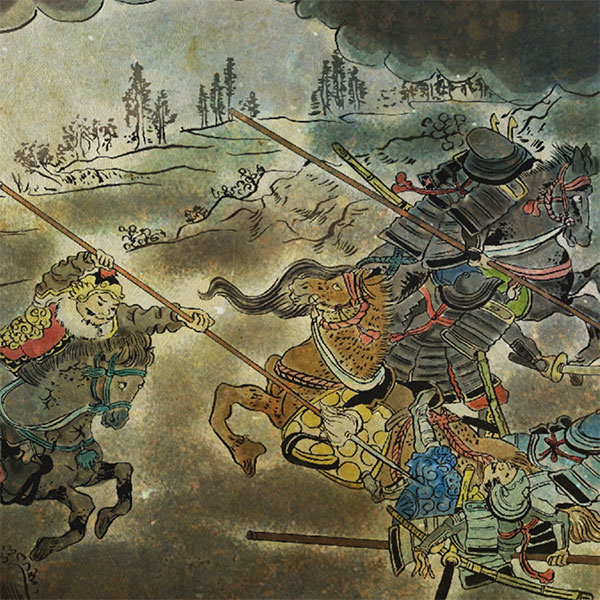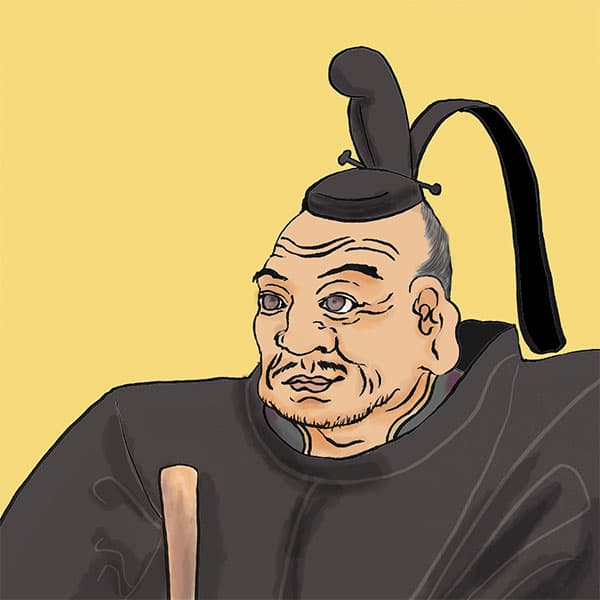Ryukyu invasion (1/2)Satsuma and the Shimazu clan took control of Ryukyu.

Ryukyu invasion
- Article category
- case file
- Incident name
- Invasion of Ryukyu (1609)
- place
- Okinawa Prefecture
- Related castles, temples and shrines

Shuri Castle
world heritage
Urasoe Castle

Nakijin Castle
world heritage
- people involved
In 1609, the lord of the Satsuma domain, Tadatsune Shimazu (Iehisa) led his army to attack the Ryukyu Kingdom and take control of it. This was an incident known as the "Ryukyu Invasion." As a result of this incident, known as the Shimazu invasion incident, Shimazu's entry into the Ryukyus, and the Ryukyu dispatch, the Ryukyu Kingdom, while maintaining its status as a ``kingdom,'' was effectively brought under the control of the Edo shogunate and the Satsuma domain. This time, I will explain the Ryukyu invasion in detail, touching on the important factor, trade between Japan and Ming.
What is the Ryukyu Kingdom, the target of the “Ryukyu Invasion”?
To talk about the Ryukyu invasion, you need to know about the Ryukyu Kingdom. From around the 14th century, three kingdoms, Kitayama, Nakayama, and Nanzan, were at war with each other on the main island of Okinawa. The Ryukyu Kingdom was established in 1429 when Sho Hashi, the king of Nakayama, unified them. The capital was established at Shuri Castle, and the trading base was moved to Naha.
They also conducted trade with mainland Japan, the Ming Dynasty (China), the Korean Peninsula, the Kingdom of Malacca, and other Southeast Asian countries. The Ming Dynasty, which had a maritime ban policy, was similar to other Asian countries in that they had to send tribute to the emperor to show obedience, have the emperor recognize him as the monarch, and receive gifts from the emperor under the tributary trade system. ” was being carried out. The main island of Okinawa has been under a sakufu system since the Three Kingdoms period in the 14th century, and this was inherited by the Ryukyu Kingdom.
The Ryukyu Kingdom received considerable preferential treatment from the Ming Dynasty in terms of trade. Normally, trade was limited to once every three years, and the ports to be visited were also fixed, but the Ryukyu Kingdom is more flexible than other countries, allowing visitors to visit once or twice a year and allowing entry to ports other than the designated ports. We were able to trade. The reason for this had to do with Wakou (pirates and smuggling groups), which the Ming Dynasty was having difficulty controlling. The Ming Dynasty positioned the Ryukyu Kingdom as a trading partner for the Wakō, and wanted to reduce the damage caused by the Wakō's plunder. Furthermore, the idea was to use the Ryukyu Kingdom as a place to gather information on the Wokou and as a place to negotiate with Japan.
Based on this background, the Ryukyu Kingdom developed as an intermediate trade base connecting the East China Sea and the South China Sea. Intermediate trade is the so-called resale of goods obtained in the Ming Dynasty and re-exported to Japan. Various goods such as pepper, sulfur, horses, and swords came and went in the Ryukyus.
However, as the Ming Dynasty gradually reduced its tributary trade and Western European countries, including Portugal, expanded into Southeast Asia, the Ryukyu Kingdom's relay trade began to decline in the 16th century. As a result, the relationship with Japan, which has been a trading partner until now, will change to one of subordination.
What is the relationship between the Ryukyu Kingdom and the Shimazu clan?
There are various theories about how the Shimazu clan began to interact with the Ryukyu Kingdom, but it is said that it was around the latter half of the 14th century, when they traded with Korea via the Ryukyu Kingdom and attempted to pay tribute to the Ming Dynasty. Furthermore, in 1471, with the permission of the Muromachi shogunate, a rule was created that trade ships that did not have a "Ryukyu Tokai Shuinjo" issued by the Shimazu clan could not cross the country, and the Ryukyu Kingdom was also given a Shuinjo. We are requesting that ships without such certification be refused entry to the port. The Shimazu clan aimed to monopolize trade between Japan and the Ryukyus.
However, in the late Sengoku period, the Shimazu clan gained control of all areas other than Kitakyushu, and opposed the Otomo clan with the aim of unifying Kyushu. However, Toyotomi Hideyoshi waited for this, and the ``Kyushu Conquest'' (also known as the Kyushu Conquest or Shimazu Conquest) occurred from July 1586 to April 1587. As a result, the Shimazu clan was defeated by Hideyoshi and came under Hideyoshi's control.
After that, Hideyoshi requested the Ryukyu Kingdom to submit to Kyoto as well. In 1588, Yoshihiro Shimazu sent a letter to the Ryukyu Kingdom requesting that an envoy be sent to celebrate Hideyoshi's appointment as Kanpaku. In response, King Shonei of the Ryukyu Kingdom sent a messenger the following year. Although the Ryukyu Kingdom did not explicitly acknowledge its subjugation, Hideyoshi unilaterally decided that ``Ryukyu was subjugated.''
Ryukyu Kingdom and “Invasion of Korea”
Afterwards, when Toyotomi Hideyoshi invaded Korea (Bunroku-Keicho War), he forced Satsuma and the Ryukyu Kingdom, which was positioned as a vassal state, to bear the burden of military service. In 1591, the Shimazu clan, as ordered by Hideyoshi, told the Ryukyu Kingdom that 15,000 people in total from Satsuma and the Ryukyu Kingdom were required to serve in the military, but the Ryukyu Kingdom had no experience in combat, so it was difficult to recruit military personnel. We do not ask for the dispatch of personnel.'' In exchange, I ordered the provision of 7,000 people and 10 months' worth of supplies.
On the other hand, the Ryukyu Kingdom did not have the financial means to do so, as it was the time to receive envoys from the Ming Dynasty. Furthermore, if it were revealed that Japan was favoring the Japanese side, there is a good chance that relations with the Ming Dynasty would deteriorate. We would like to maintain our relationship with Ming, which is an important trading nation. For this reason, the Ryukyu Kingdom was only responsible for half of the military duties. The remaining half was borne by the Satsuma clan, so the Ryukyu Kingdom ended up in debt to the Satsuma clan.
At this time, the Shimazu clan kept quiet about the Korean invasion to other countries, but the Ryukyu Kingdom sent a messenger to the Ming Dynasty to report on Hideyoshi's movements. After the end of the Bunroku era in 1593, they strengthened their stance toward the Ming Dynasty.
The Keicho War, which began in 1597, ended with Hideyoshi's death in the following year (1598). After Hideyoshi's death, Tokugawa Ieyasu became the leader of the Five Elders, and after the Battle of Sekigahara, the Tokugawa-Edo Shogunate came to rule Japan.
The Edo shogunate asked the Ryukyu Kingdom to mediate trade between Japan and Ming.
Tokugawa Ieyasu, who established the Edo shogunate in 1603, aimed to resume trade with the Ming Dynasty. The key to restoring trade was the Ryukyu Kingdom, which had a tributary relationship with the Ming Dynasty. In fact, in 1602, a Ryukyu ship washed ashore in Date Masamune's territory in Tohoku, and at that time Ieyasu treated the stranded people respectfully and ordered the Shimazu clan to accompany them. By offering favors to the Ryukyu Kingdom, they hoped that the Ryukyu Kingdom would help mediate with the Ming Dynasty.
- people involved

- WriterNaoko Kurimoto(Writer)I am a former travel industry magazine reporter. I have loved history, both Japanese and world history, since I was a child. I usually enjoy visiting temples and shrines, especially shrines, and often do ``pilgrimages to sacred places'' themed around historical figures. My favorite military commander is Ishida Mitsunari, my favorite castle is Kumamoto Castle, and my favorite castle ruins is Hagi Castle. My heart flutters when I see the ruins of battle castles and the stone walls of castle ruins.








